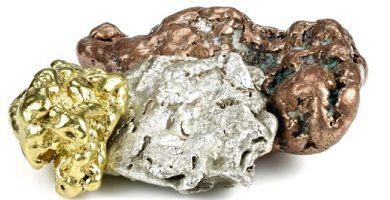What are energy resources?
We explain what renewable and non-renewable energy resources are. In addition, its importance and what is nuclear energy.
-
What are energy resources?
Energy resources are the set of substances that can be used as a source of energy , through different physical or chemical processes discovered by humans . It is a type of substances that generally has a natural origin, but that through the industry allow to obtain energy, especially electrical and caloric energy.
Energy resources may be of a very different nature and require different processes to release their contained energy. Even from a certain perspective, the food we eat is an energy resource for our body , because through its digestion we obtain the chemical energy necessary to continue living.
It is not the same to speak of energy sources than of energy resources. Mostly because energy sources are events, dynamic or cycles of nature that are constantly emitting usable energy such as the sun , or indirectly can be used to obtain, as the winds or falling water .
Unlike energy sources, energy resources are characterized by the fact that they require the transformation of matter to release the energy contained within.
-
Importance

In the contemporary world, energy is one of humanity’s most precious assets, since it can boost all kinds of industries that make our lives easier and more enjoyable, or that allow us to continue discovering new technologies .
In addition, with it we can mobilize transport, heat our homes when it is cold (or cool them when it is too hot), cook our food or light our dark nights.
Therefore, resources capable of providing energy are key today. Many of the political, social or economic dilemmas of the world lie precisely in the struggles to have control over them.
-
Non-renewable energy resources

Non-renewable energy resources are, as the name implies, those consumed when used . Their stocks are not easy to replenish, so one day they will run out and disappear. Some because their quantities in the world are limited, and others because their origin processes are so slow or so difficult, that it is not possible to create them at the rate at which they are consumed.
Some examples of non-renewable energy resources are:
- The oil . Formed over billions of years, from organic matter from decomposing microorganisms and buried in the subsoil at enormous pressures and temperatures , this fossil substance has an enormous energy capacity and is also a source of numerous chemical derivatives useful to humanity.
- Mineral coal . Of similar origin to oil, but related to immense deposits of millenary wood fossilized in the subsoil, it is also an important source of energy as fuel , and many of the world’s energy industries depend on its exploitation .
- Natural gas . Another fossil fuel, is a gas rich in hydrocarbons that is normally found in underground deposits, or even in oil fields in different proportions. It is basically a volatile mixture of light gases.
-
Renewable energy resources

On the contrary, renewable energy resources are those that do not run the risk of ending their stocks in the foreseeable future , given that they are superabundant, or they can be obtained through relatively simple and fast processes.
Some examples of renewable energy resources are:
- The biomass . It is organic matter of vegetable and animal origin that, accumulated and subjected to the appropriate chemical and physical treatments, can become biofuels , such as bioethanol, biodiesel or biogasoil.
- Hydrogen . The most abundant element of the known universe and also the simplest, is a possible source of energy if it is possible to control the process of nuclear fusion that, within the stars themselves, causes an immense release of light and energy. This is, in fact, the energy resource of our Sun and is a technology still under investigation.
-
The nuclear energy

Nuclear energy is that which consists in the exploitation of chemical energy contained in the atoms themselves, through the transformation of one element into others.
It is a process that can be used for peaceful purposes (as in nuclear power plants) or war (as in atomic bombs). It represents one of the great achievements of modern physics in the twentieth century.
Nuclear energy uses energy resources of different types, depending on the physical process that supports it:
- Fission : It is the division of heavy materials such as certain isotopes of uranium and cesium, which, although rare, could be effortlessly manufactured in a laboratory.
- Fusion : It is the union of light atoms such as hydrogen or helium, imitating what happens due to the effect of gravity in the heart of the stars themselves.




